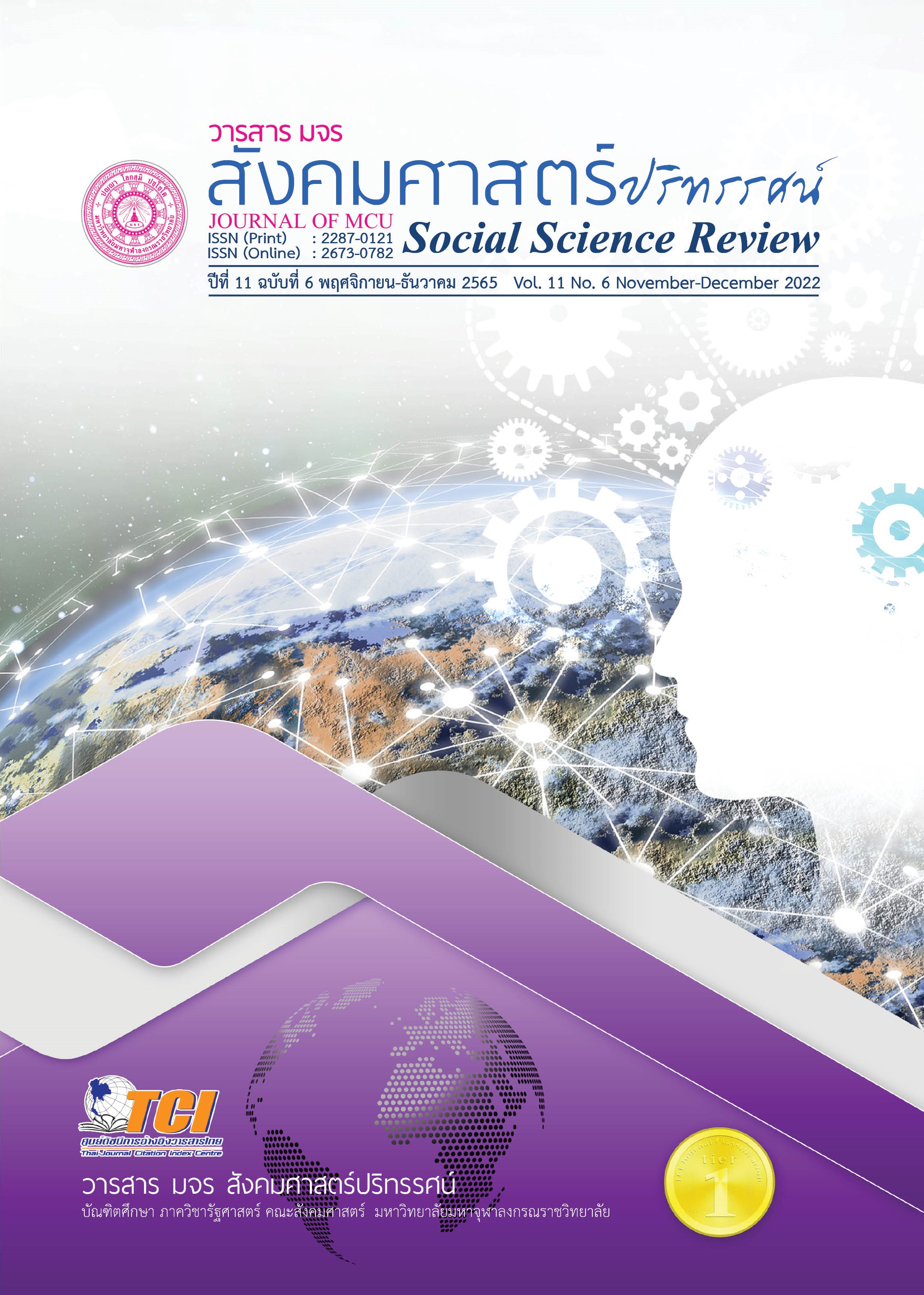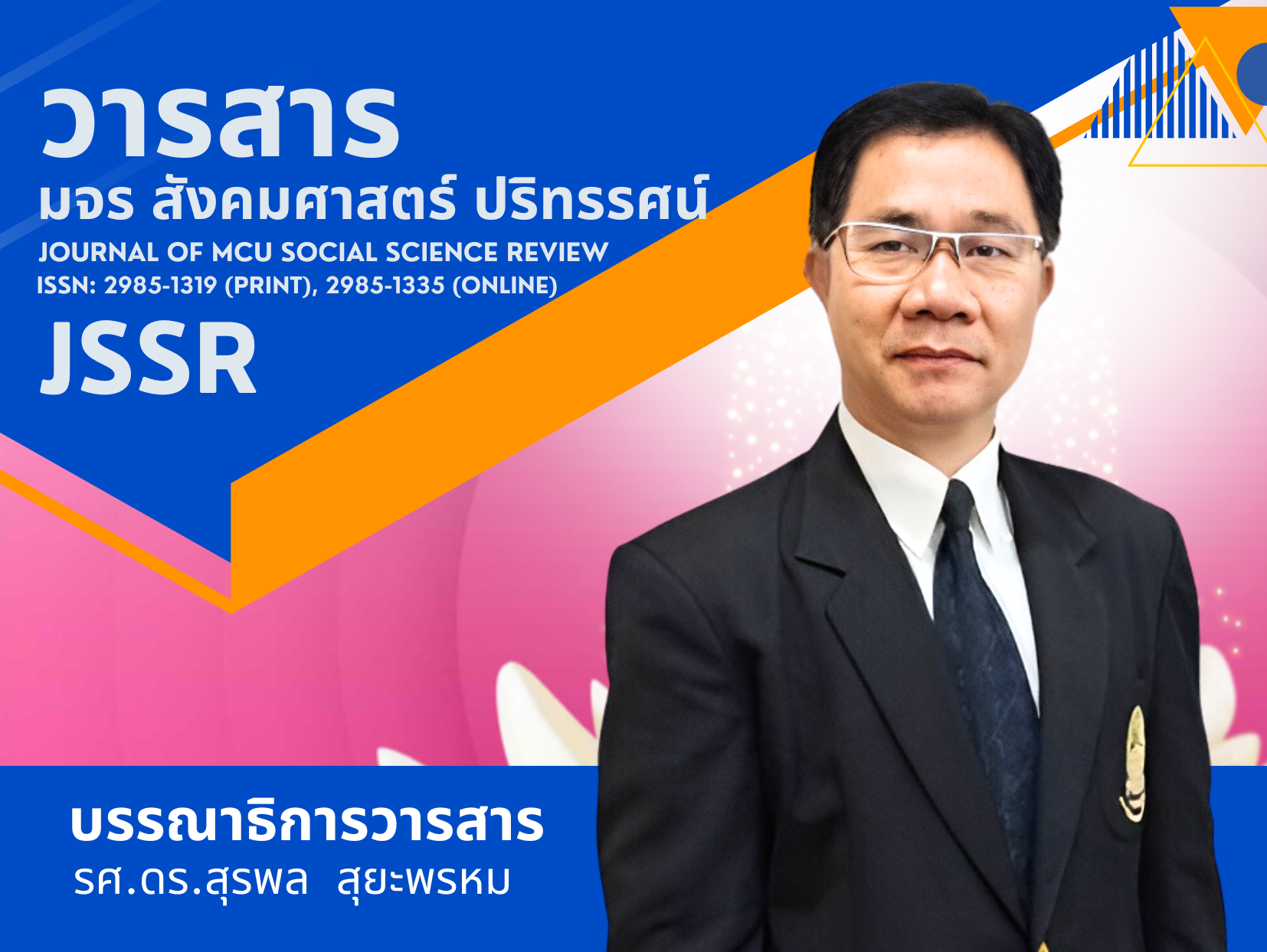GROUNDED THEORY: METHODOLOGY FOR INVESTIGATION IN SOCIAL SCIENCES
Keywords:
Grounded Theory, Methodology, Social Sciences, Qualitative researchAbstract
This academic article studied history of the Grounded Theory method, including the works of scholars during different periods related to this method, and also studied the methodological influence of Grounded Theory, as well as important moments that affected the development of the concept. At the same time, it pointed out the important characteristics of Grounded Theory in the investigation of knowledge. This makes grounded theory different from other qualitative research methods in social science research. In addition, this article focused on controversies related to strengths, weaknesses, and challenges of Grounded Theory in order to think and rais questions leading to the development of an effective research model in the investigation of knowledge further
References
ชาย โพธิสิตา. 2562. ศาสตร์และศิลป์ การวิจัยเชิงคุณภาพ. กรุงเทพฯ: อมรินทร์พริ้นติ้งแอนด์พับลิชชิ่ง.
นรินทร์ สังข์รักษา.(2557). บทปริทัศน์หนังสือเชิงวิพากษ์. วารสารศิลปากรศึกษาศาสตร์วิจัย, 6(1), 309-312.
พิชาย รัตนดิลก ณ ภูเก็ต. (2559). ปรัชญาสังคมศาสตร์: การอธิบายทางสังคมรากฐานสำหรับการวิจัยทางสังคมศาสตร์. กรุงเทพฯ: บางกอกบล๊อก.
_______. (2012). บทวิจารณ์หนังสือ ระเบียบวิธีทฤษฎีฐานราก (Grounded Theory). วารสารพัฒนาสังคม, 2(6), 101-110.
Backman, K., & Kyngäs, H. A. (1999). Challenges of the grounded theory approach to a novice researcher. Nursing & health sciences, 1(3), 147-153.
Benoliel, J. Q. (1996). Grounded theory and nursing knowledge. Qualitative Health Research, 6(3), 406-428.
Birks, M., & Mills, J. (2015). Grounded Theory: A Practical Guide. Los Angeles, CA: Sage.
Charmaz, K. (2013). Grounded theory Methods in Social Justice Research, in N.K. Denzin and Y.S. Lincoln [ed.4], Strategies of Qualitative Inquiry [pp. 300-301]. CA: Sage.
_______. (2014). Constructing grounded theory. CA: Sage.
Cho, J. Y. & Lee E. H. (2014). Reducing Confusion about Grounded Theory and Qualitative Content Analysis: Similarities and Differences. The Qualitative Report, 19(64), 1-20.
Corbin, J. & Strauss, A. (2015). Basics of qualitative research: Techniques and procedures for developing grounded theory. Thousand Oaks, CA: Sage.
Creswell, J. W. (2012). Educational research: planning, conducting, and evaluating quantitative and qualitative research. Boston: Pearson Education Inc.
Denzin, N. K. & Lincoln, Y. S. (Eds.). (2011). Handbook of qualitative research (4th ed.). Thousand Oaks, CA: Sage.
Dey, I. (1999). Grounding grounded theory. London: Academic Press.
Egan, T. M. (2002). Grounded Theory Research and Theory Building. Advances in Developing Human Resources, 4(3), 277-295.
Glaser, B., & Strauss, A. (1967). The discovery of grounded theory. Hawthorne, NY; Aldine.
Goldkuhl, G. & Cronholm S. (2010). Adding Theoretical Grounding to Grounded Theory:Toward Multi-Grounded Theory. International Journal of Qualitative Methods, 9(2), 187-205.
Heath, H., & Cowley, S. (2004). Developing a grounded theory approach: a comparison of Glaser and Strauss. International journal of nursing studies, 41(2), 141-150.
MacLaren, M. & Mills J. (2015). Transformational Grounded Theory: Theory, Voice, and Action. International Journal of Qualitative Methods, 14(3), 1-12.
Markey, K., Tilki, M., & Taylor, G. (2014). Reflecting on the challenges of choosing and using a grounded theory approach. Nurse Researcher, 22(2). 16-22.
Mills, J., Bonner, A., & Francis, K. (2006). The development of constructivist grounded theory. International journal of qualitative methods, 5(1), 25-35.
Pries-Heje, J. (1992). Three barriers for continuing use of computer-based tools in Information systems development: A grounded theory approach. Scandinavian Journal of Information Systems, 4, 119–136.
Downloads
Published
How to Cite
Issue
Section
License
Copyright (c) 2022 Journal of MCU Social Science Review

This work is licensed under a Creative Commons Attribution-NonCommercial-NoDerivatives 4.0 International License.
In order to conform the copyright law, all article authors must sign the consignment agreement to transfer the copyright to the Journal including the finally revised original articles. Besides, the article authors must declare that the articles will be printed in only the Journal of MCU Journal of Social Sciences. If there are pictures, tables or contents that were printed before, the article authors must receive permission from the authors in writing and show the evidence to the editor before the article is printed. If it does not conform to the set criteria, the editor will remove the article from the Journal without any exceptions.




